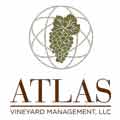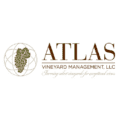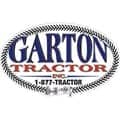By Roger Coryell. 8/9/24.
Bears, mud, and midnight tractor rides
Bears. Fast, agile, hungry, smart bears. Mud. Snow. Hornets. Mountain lions and wild boars. Mildew. Driving a tractor between steep sloping muddy rows in the dark. Mendocino Ridge is not an easy place to farm. Steve Alden, co-owner of Perli Vineyard in the Mendocino Ridge AVA and the creator of Murder Ridge wines takes it all in stride.
“When you’re tying a forklift to a pickup truck with a box of rocks in the bed just to get up a hill, you know you’re farming on a different level,” says Steve. “It’s not for the faint of heart, but it makes for great wine—and even better stories!”

Hands-on farming in Mendocino County
What’s different about being a Mendocino County winegrower, as opposed to better-known wine regions? Steve puts it very well: “I do all the farming here. I hire a couple, two or three people (all of whom have worked for me for over 20 years. I’m here every day, and I’m the guy on the tractor. I was on the tractor till 1 a.m. last night, doing all the spraying, doing all the tractor work. I used to do a lot more hand work, but my back can’t take it anymore. So I’m kind of, you know, I feel like I’m getting old, but I’m actually a hands-on farmer. And so I do experiments like that down there (pointing at several rows of pinot noir he has treated differently than the rest of the vineyard) every year because I want to know, okay, I did this. What happened? I did that. What happened? And that’s the great thing about growing grapes; it’s kind of a mix between being a farmer and an artist. And you could be as much of an artist as you want to be.”
Room for improvement? Steve says “we need to do a lot better job of educating wine drinkers about the quality of Mendocino County grapes and wine.”
“I want to be this artist, and I lose the fact that I actually have to make some money back on this stuff. But yeah, I’m the guy who grows the grapes, I harvest the grapes, and then I go to the winery and make sure they’re handling my grapes correctly because my reputation is, you know, if they’re going to put that in the bottle with Perli on it, it sure as hell better be good.”
From photography to viticulture
If you visit the Murder Ridge website and ask, “How did he get all these amazing photos?” the answer is that Steve was a professional photographer before he got into the grape-growing business. Why the transition to grapes? “The reason we started the vineyards here is I had to figure out something. You know, we got this beautiful park, but I can’t afford to just have a couple thousand acres out there. So we needed to figure out some way to make it economically viable. And that’s how the grapes came about.”
“This ranch has been in the family since 1951. My grandfather bought it for the redwood and fir. As far as the vineyards go, I planted everything myself, starting around 1990. This was originally part of the Lombardy Colony, an agricultural enclave settled by people from Lombardy, who of course grew grapes.” In the 1800s the Perli family, the original homesteaders of what is now Perli Vineyard, grew wine grapes, but those were long gone.when Steve started planting.

Perli Vineyard is spread out across a giant C-shaped archipelago of ridgetops. The grapes are highly sought after and usually spoken for by well-known wineries, each of whom has their own protocols for grape growing. This also explains why Steve chose not to compete directly with his clients by using the “Perli” name for his own wines.
“This row is Donelan Vineyards here, and then Arista starts. This whole center section is Arista, and they each have their slightly different protocols they want for the grapes.”

In addition to Arista and Donelan, Steve also mentions that Hartford Court and Edmeades source grapes from Perli Vineyard. Hartford Court recently started purchasing both pinot noir and chardonnay from him. These wineries are highly involved in the vineyard’s farming practices, ensuring that the grapes meet their specific quality standards. Arista has a protocol of using one cluster per shoot, while Donelan is more flexible but also does cluster and tonnage counts to determine the best approach.
Murder Ridge: A name with history
For his own wine, Steve opted for “Murder Ridge” as a distinctive and evocative name that ties into the vineyard’s unique history. This decision allowed him to maintain good relationships with his grape buyers while also establishing a separate and compelling brand identity for his own wine.
This vineyard was originally the homestead parcel of Peter Gianoli, who killed his neighbor, Joseph Cooper, and stole his wine. The name Murder Ridge came from that. “We were developing the vineyard, and a neighbor mentioned the murder happened right where we were planting. So, we decided to name the vineyard after it. It’s a bit evocative, and we use crows as our logo to tie in with the name.”
Favorite grapes and winemaking philosophy
What does he drink when he grabs a bottle to go with dinner? “My favorite thing to drink? Zinfandel.” Steve explains that his zinfandel is special and different because it has a much brighter flavor profile, with less jamminess and more stone fruit characteristics. “It’s way brighter, less jammy, more stone fruit. You can get it really ripe without getting that dry plum or overripe prune taste.”
“Favorite grape to grow? It’s got to be oinot. So, yeah, if I’m going to grab a bottle to drink, I’m taking a bottle of zin or pinot with me. I like growing pinot because … pinot and zin are very similar to grow. They’re both thin-skinned, tight-clustered grapes. The nice thing about pinot is it comes off significantly earlier, so you don’t have to worry about mold issues”
Steve has a specific protocol that involves ensuring that “no cluster should touch another cluster.” This practice is part of his meticulous approach to vineyard management, aimed at improving the quality of the grapes and reducing the risk of issues like mold or uneven ripening.

By carefully managing the spacing of clusters on the vine, he ensures better air circulation and sunlight exposure, which are crucial for healthy grape development and optimal ripeness. This method is particularly important in a challenging environment like his vineyard, where the conditions can be tough, and every detail counts in producing high-quality fruit.
“My grandfather was a farmer, and he taught me the value of hard work and resilience. He used to say, ‘If you take care of the land, the land will take care of you.’ Those words have always stayed with me and guide how I approach farming today.”
“We dry farm, we mow, don’t own any disc or cultivating equipment. We practice low-intervention farming. We want our wines to reflect Perli’s special place in the Mendocino wilderness.”
A meticulous approach to grape growing
Steve’s grape-growing philosophy includes several key practices and protocols that he believes are essential for producing high-quality grapes:
1. Cluster management: Steve has a specific protocol where “no cluster should touch another cluster.” This involves meticulous management of the vines to ensure proper spacing and exposure to sunlight. For example, with Arista Winery, they went with one cluster per shoot, a method that helps in controlling the crop load and ensuring even ripening.
2. Leaf stripping and thinning: Steve practices leaf stripping on one side of the vines to improve air circulation and sunlight exposure, which reduces the risk of mildew and helps in ripening and flavor development. He also thins the clusters significantly, for better fruit intensity, and more even ripening this also helps manage mildew and mold pressure, which is higher due to the proximity to the coast. This process involves removing excess clusters to focus the vine’s energy on fewer, higher-quality grapes.
3. Dry farming: Except for the hand-tended block, which receives minimal irrigation due to its steep and porous nature, Steve practices dry farming. This method relies on natural rainfall and forces the vines to develop deep root systems, which can lead to more concentrated flavors in the grapes.
Then there’s Murder Ridge, Steve’s own winery. Steve and Consulting Winemaker Bryan Kvamme approach winemaking at Murder Ridge with a focus on minimal intervention, allowing the vineyard’s natural character to guide the process. Steve uses almost exclusively one-year old Francois Freres French oak barrels he sources from a high end winery who uses 100 percent new French oak on their wines.
“We don’t want to manipulate the wine too much. It’s about letting the vineyard speak.” – Steve Alden
The blending process is equally meticulous. Steve and Bryan taste through each lot, understanding the unique qualities of the fruit, acidity, and tannins. They experiment with different combinations to achieve a balanced and harmonious final blend. “It’s about finding the right balance, so the wine truly reflects the vineyard’s terroir,” Steve explains. By focusing on balance, complexity, and the authentic expression of the land, they ensure that each bottle of Murder Ridge wine is a true reflection of the vineyard and its unique characteristics.
Pushing the envelope on ripeness
Decanter reviewer Jonathan Cristaldi says Steve enjoys “pushing the envelope on ripeness in an AVA where understated elegance is more the norm.” In 2024, many winemakers are leaning toward slightly lower Brix levels to achieve balance, freshness, and lower alcohol content in the final wine. Steve successfully bucks that trend and prefers to pick his grapes at around 25 to 26 Brix. This level of ripeness allows him to achieve the desired balance of sugar, acidity, and flavor development in the grapes, which contributes to the overall quality and character of the wine. By picking at this Brix level, Steve ensures that the grapes have the richness and concentration he’s looking for while still maintaining the balance needed for a well-structured wine.
Murder Ridge is special. As Steve says, “We don’t want to manipulate the wine too much; it’s about letting the vineyard speak. The wine should tell the story of where it comes from, not just how it was made.”



































